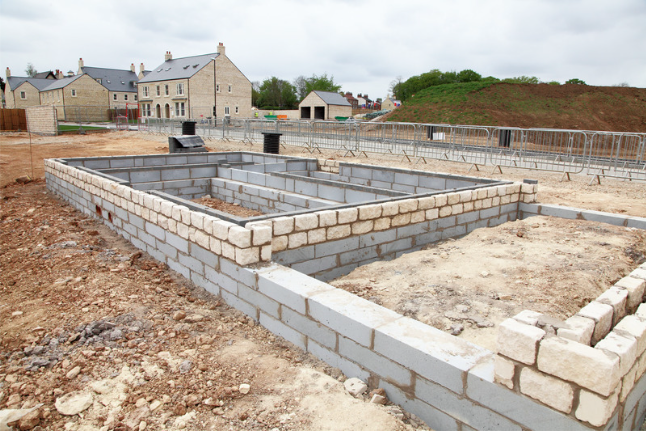Setting profitable fee structures for architecture firms is essential for the success of your practice.. In this guide, I’ll walk you through a clear, step-by-step approach that ensures your fees cover all costs while maximizing your profit margins. We’ll also explore a real-world example to illustrate these concepts in action, making it easier for you to apply them to your own firm. These principles are adaptable to a variety of projects, making them relevant for all architecture firms. Let’s dive into the details.

Step 1: Laying the Foundation
Understanding your costs and effectively allocating resources is the first step to establishing profitable fee structures for architecture firms. But why is this foundation so crucial? Without a clear grasp of your costs and how to allocate your resources, you risk underpricing your services or, conversely, pricing yourself out of the market.

Have you ever wondered why some firms consistently maintain healthy profit margins while others struggle? The answer often lies in their approach to cost management and resource allocation.
1.1 Allocate a Percentage of the Firm’s Time to the Project
Start by asking yourself, “How much of our time will this project really take?” Knowing this is essential because it influences everything that comes next.

Steps:
- Estimate Time Allocation: Estimate the percentage of time your team will spend on the project.
- Assess Multiple Projects: If you’re handling multiple projects, determine how to fairly allocate your team’s time.
- Consider Industry Norms: Industry norms suggest that many small to medium-sized architecture firms allocate between 15% to 25% of their total resources to a single project, depending on its complexity and duration.
Have you ever been in the middle of a project and realized your team’s time is stretched too thin? Allocating the right percentage of your firm’s time upfront can save you from those last-minute scrambles. Remember, it’s not just about getting the job done—it’s about doing it efficiently. How often do we overlook the importance of properly estimating time allocation? By making this a priority, you’re setting your project—and your team—up for success.
1.2 Estimate Billable Fees
Now that you’ve allocated your firm’s time to the project, it’s time to estimate the billable fees. This involves calculating the fees for each employee type based on their hourly rates, which already include overhead and profit, and then summing these to determine the total billable fees for the project.

Steps:
- Estimate Hours: Determine how many hours each employee type (e.g., senior architect, junior architect) will work on the project.
- Calculate Billable Fees (per employee type): Multiply the estimated hours by the billing rate for each employee type to find the billable fee per employee type.
- Calculate Total Billable Fees for the Project: Sum the billable fees across all employee types to determine the total billable fees for the project.
Pro Tip: Industry standards suggest that billable rates for architects typically range from $100 to $250 per hour, depending on experience and location. Make sure to review and adjust your rates periodically to ensure they align with current industry norms. Keeping your rates updated helps maintain competitiveness and profitability. By accurately estimating billable fees, you ensure the project is priced to cover costs and align with profitable fee structures for architecture.
1.3 Include Subcontractor Costs
If subcontractors are involved in the project, it’s essential to estimate those costs and include them in your total project budget. Since your firm’s billable rates already include overhead and profit, you’ll need to ensure that subcontractor costs are accurately reflected and appropriately marked up to maintain profitability.

Steps:
- Estimate Subcontractor Costs: Obtain detailed quotes or agreements from subcontractors based on the specific scope of work.
- Apply Markup: Consider adding a standard markup to subcontractor fees to cover coordination efforts and ensure the project’s overall profitability aligns with your firm’s financial goals.
- Calculate Total Project Fees: Add the subcontractor costs (with markup) to your firm’s total billable fees to determine the complete project fee.
Pro Tip: It’s common to apply a markup of 10% to 20% on subcontractor fees to cover coordination efforts and maintain profit margins. Regularly reviewing and adjusting these markups based on market conditions and project complexity can help ensure that your firm remains competitive and profitable.
1.4 Take Aways
As you lay the foundation for profitable fee structures for architecture firms, are you considering how each decision impacts your project’s profitability? By accurately estimating the time your team will spend on the project and calculating billable fees that already include overhead and profit, you simplify your pricing strategy while ensuring it remains competitive. Have you also factored in subcontractor costs and applied an appropriate markup to maintain your firm’s profit margins? Remember, regularly reviewing your rates and markups to align with industry norms can keep your firm both competitive and profitable in a constantly changing market.
Step 2: Structuring Your Fees
Once you’ve nailed down your costs, it’s time to structure your fees into profitable fee structures for architecture firms. This crucial step determines how much to charge and how to present that fee to your clients. Why is the structure of your fees so important? A well-thought-out fee structure not only covers your costs but also reflects the value you bring to your clients.
Have you ever considered how the right fee structure can impact your firm’s competitiveness? Setting fees too low can lead to financial strain, while fees that are too high might turn away potential clients. Striking the right balance is key to maintaining a healthy business.
2.1 Validate the Total Project Fees
Before finalizing your fees, it’s essential to validate the total project fees to ensure they’re accurate and consistent. Using an alternative basis of estimate provides a useful cross-check against your initial calculations.

Steps:
- Use an Alternative Basis of Estimate: Consider using a percentage of the total construction cost or referencing historical data from similar projects to estimate the fee. These methods provide a reliable benchmark to compare against your initial fee calculation.
- Cross-Check Consistency: Compare the results from different bases of estimate to ensure consistency. If there’s a significant discrepancy, revisit your calculations to identify any potential issues.
Pro Tip: By validating your total project fees using multiple methods, you ensure that your fees are both competitive and aligned with industry standards. This step adds an extra layer of confidence to your pricing strategy, helping you avoid undercharging or overcharging your clients.
2.2 Add a Contingency
Even the best-laid plans can go awry. Adding a contingency to your fee helps cover those unexpected challenges that may arise during the project.

Steps:
- Set Contingency Percentage: Typically, 5% to 10% of total costs is sufficient to handle surprises.
- Communicate with Clients: Inform your clients about the contingency to demonstrate preparedness for unforeseen challenges.
Have you ever found yourself caught off guard by unexpected costs that weren’t in the original plan? That’s exactly why contingencies are so important. They’re not just a safety net—they’re a sign of your foresight and professionalism. How well are you communicating these contingencies to your clients? By being upfront about the potential for unexpected challenges, you’re not only protecting your profit but also reinforcing your client’s confidence in your ability to manage the project effectively.
2.3 Consider the Value You Provide
In addition to validating your fees, it’s crucial to consider the value you’re providing to your clients. Value-based pricing focuses on the perceived value of your services rather than solely on costs, allowing you to align your fees with the unique benefits your firm offers.

Steps:
- Identify Unique Benefits: Reflect on the unique benefits your firm provides (e.g., expertise in sustainable design, specialized knowledge in specific project types).
- Align Fees with Value: Adjust your fees to better reflect the value you deliver. This might mean setting higher fees for services that offer significant value to the client, such as innovative design solutions or faster project delivery.
When was the last time you really thought about the value you’re delivering to your clients? It’s easy to get caught up in the costs and forget about the benefits you’re providing. But here’s the thing—clients are willing to pay more when they see the value in what you’re offering. Are you positioning your services in a way that highlights their true value? By aligning your fees with the value you provide, you’re not just charging for your time—you’re charging for the expertise, quality, and peace of mind you deliver.
2.4 Choose the Right Fee Structure
Your fee structure should fit both the project and your client’s expectations. Let’s explore the most common options and how to choose the best one.

Common Structures:
- Percentage-Based Fees: Charge a percentage of the total construction cost, ideal for predictable projects.
- Fixed Fees: Set a specific amount for the entire project, useful when the scope is clearly defined.
- Hourly Rates: Charge based on the actual hours worked, offering flexibility for projects with evolving scopes.
- Stipulated Sum (Lump Sum): Set a fixed amount for the entire project, providing price certainty but requiring careful scope consideration.
- Hybrid Structures: Combine fee structures, such as a fixed fee for design and hourly rates for construction administration.
Isn’t it interesting how the right fee structure can make or break a project? Have you ever felt like you were locked into a fee structure that didn’t quite fit the project’s needs? Choosing the right structure is about more than just picking a number—it’s about aligning your pricing with both your client’s expectations and the realities of the project. Whether you opt for a percentage-based fee, a fixed fee, or something else, the key is to match the structure with the project’s unique demands. What’s your go-to fee structure, and is it serving you as well as it could?
2.5 Take Aways
As you structure your fees into profitable fee structures for architecture firms, are you considering how to validate them, add contingencies, and choose the best fee structure? By following these steps, you ensure that your fees are competitive, reflective of the value you provide, and resilient to unforeseen challenges. Are you regularly cross-checking your fees against alternative estimates to maintain consistency? Remember, a well-structured fee is more than just a number—it’s a key to your firm’s long-term success.
Step 3: Managing Profitability and Project Success
Now that your profitable fee structures for architecture are in place, let’s make sure they’re going to deliver the profit your firm needs to thrive. This step is all about verifying that your profitable fee structure for architecture covers your costs and aligns with your financial goals. But why is it essential to focus on profitability? A well-structured fee that doesn’t yield profit can lead to stress and uncertainty, jeopardizing your firm’s sustainability.
Have you ever found yourself wondering why some projects seem to drain resources while others flourish? The answer often lies in how effectively you plan for and monitor profitability throughout the project lifecycle.
3.1 Ensuring Overall Profitability
Before you finalize your fee, it’s essential to ensure that it will deliver the profit your firm needs to thrive. This involves calculating the profitability of your project, considering all costs, and adjusting your fee if necessary.

Steps:
- Calculate Profitability: Start by calculating your profit margin to ensure that your fees will cover your costs and provide the desired profit.
- Adjust if Needed: If the profit margin is lower than expected, consider adjusting the fee or renegotiating terms with the client.
Pro Tip: Ensuring profitability isn’t just about setting a fee—it’s about continually monitoring costs and adjusting your approach as the project progresses. How often do you reassess your project’s financial health to ensure it stays profitable?
3.2 Scenario Planning for Profitability
Scenario planning remains crucial to maintaining profitability, but with the understanding that your fees already account for overhead and profit, the focus should be on managing unexpected changes and client expectations.

Steps:
- Identify Potential Scenarios: Consider what could go wrong during the project.
- Analyze the Impact: Assess how each scenario would affect your overall profitability and project costs.
- Adjust Calculations: Recalculate your profit margins based on the new estimates.
- Evaluate: Determine whether you need to adjust your fee or negotiate terms with the client.
Pro Tip: Regularly revisiting your scenario plans can help you stay proactive, rather than reactive. How often do you reassess your project plans to ensure they’re still on track? Keeping a close eye on potential risks ensures that your profitability is protected throughout the project.
3.3 Structuring the Fee by Project Phases
Given that your fees already include profit margins, the emphasis here should be on ensuring that your fee structure aligns with project milestones, allowing for smooth cash flow and client communication.

Phases:
- Schematic Design (15% to 20%): This phase involves conceptual design, initial drawings, and client meetings to establish the project’s overall direction.
- Design Development (20% to 25%): During this phase, the initial designs are refined, materials are selected, and more detailed drawings are created.
- Construction Documents (30% to 40%): This is often the most time-intensive phase, where detailed blueprints and specifications are prepared for construction.
- Bidding and Negotiation (5% to 10%): This phase includes preparing bid documents, assisting with the bidding process, and selecting contractors.
- Construction Administration (10% to 20%): During construction, the architect oversees the project, answers contractor questions, and ensures that the work is completed according to the plans.
Pro Tip: By breaking down your fees into project phases, you provide clarity for both your firm and your client. This not only helps with billing but also ensures that both parties are aligned throughout the project’s lifecycle.
3.4 Takeaways
As you manage profitability and project success, are you considering how to structure your fees by project phases and plan for potential scenarios? By following these steps, you ensure that your fees are aligned with project milestones, maintain profitability, and provide clear communication with your clients. Are you regularly revisiting your scenario plans to stay ahead of unexpected challenges? Remember, proactive management and clear communication are key to ensuring your projects are both successful and profitable.
Real-World Example
Let’s bring this all to life with a real-world example of profitable fee structures for architecture firms.
Your firm, a 5-person architecture firm consisting of 3 architects (senior, mid-level, and junior), 1 draftsman, and 1 office manager, is tasked with designing a church on the East Coast of Florida, with a $5 million construction budget and an 18 month schedule. You’re juggling 10 projects, and you’ve decided to allocate 20% of your team’s time to this project.

1. Laying the Foundation
1.1 Allocate a Percentage of the Firm’s Time to the Project
With 5 employees working a total of 2,700 hours each over 18 months, the firm has a combined total capacity of 13,500 hours. You’ve allocated 20% of your firm’s resources to this project, giving you an estimated total of 2,700 hours available for the project.
1.2 Estimate Billable Fees
Given the 70% billable utilization rate, the actual billable hours that can be devoted to the project are:
- Total Billable Hours (at 70% utilization): 2,700 hours × 0.70 = 1,890 hours
Next, you estimate the number of hours each team member will spend on the project:
- Senior Architect: 15% of 1,890 hours = 284 hours at $200/hour = $56,800
- Mid-Level Architect: 25% of 1,890 hours = 473 hours at $150/hour = $70,950
- Junior Architect: 40% of 1,890 hours = 756 hours at $100/hour = $75,600
- Draftsman: 20% of 1,890 hours = 378 hours at $75/hour = $28,350
Total Billable Fees: $231,700
1.3 Include Subcontractor Costs
You estimate subcontractor costs to be $130,000. Applying a 15% markup to these costs, you add $19,500 to cover coordination efforts and ensure profitability.
Total Project Fees (Including Subcontractor Markup): $231,700 (billable fees) + $149,500 (subcontractor fees with markup) = $381,200
2. Structuring the Fees
2.1 Validate the Total Project Fees
To ensure the accuracy of your fee calculation, you cross-check it with an alternative basis of estimate:
- Percentage of Construction Cost: At 10% of the $5 million construction cost, your fee would be $500,000.
Cross-Check Consistency: The current project fee of $381,200 is lower than the $500,000 derived from the percentage of construction cost. This indicates that the initial allocation of resources might be insufficient.
Reassessment: To address this, you decide to increase the allocation of the firm’s time to the project from 20% to 25%. This adjustment leads to a recalculated total billable hours:
- Total Hours Available (at 25% allocation): 13,500 hours × 25% = 3,375 hours
- Adjusted Billable Hours (at 70% utilization): 3,375 hours × 0.70 = 2,363 hours
You then update the billable fees accordingly:
- Senior Architect: 15% of 2,363 hours = 354 hours at $200/hour = $70,800
- Mid-Level Architect: 25% of 2,363 hours = 591 hours at $150/hour = $88,650
- Junior Architect: 40% of 2,363 hours = 945 hours at $100/hour = $94,500
- Draftsman: 20% of 2,363 hours = 473 hours at $75/hour = $35,475
Updated Total Billable Fees: $289,425
Updated Project Fees (Including Subcontractor Markup): $289,425 (billable fees) + $149,500 (subcontractor fees with markup) = $438,925
Final Cross-Check: After this reassessment, the updated total project fee of $438,925 is closer to the $500,000 benchmark, suggesting the fee now more accurately reflects the project scope and complexity.
2.2 Add a Contingency
To account for any unforeseen challenges, you include a 5% contingency in your fee, totaling $21,946.
Total Fee with Contingency: $460,871
2.3 Consider the Value You Provide
Recognizing the unique value your firm offers, you decide to increase the fee to align more closely with the 10% of construction cost estimate, which justifies a fee of $500,000. This increase reflects the high-quality service, innovation, and expertise your firm brings to the project.
Value-Based Fee: $500,000
3. Managing Profitability and Project Success
3.1 Ensuring Overall Profitability
Now that you have your value-based fee, it’s time to calculate profitability. With the total fee set at $500,000 and your total billable fees plus contingency calculated earlier at $311,371:
- Total Fee = $500,000
- Total Billable Fees + Contingency = $311,371
- Actual Costs (Excluding Built-In Profit Margin): Since the billing rates include a 15% profit margin, the actual cost portion of the billable fees plus contingency would be 85% of $311,371:
Actual Costs = 0.85 × 311,371 = $264,665.35 - Total Estimated Costs (Including Subcontractor Costs):
Total Estimated Costs = $264,665.35 + $130,000 = $394,665.35 - Profit = Total Fee – Total Estimated Costs:
Profit = $500,000 – $394,665.35 = $105,334.65 - Profit Margin = (Profit / Total Fee) × 100:
Profit Margin = ($105,334.65 / $500,000) × 100 ≈ 21.07%
By using the raw subcontractor costs in the calculation, the overall profit margin is now approximately 21.07%. This reflects a healthy profit margin, ensuring that the project contributes positively to your firm’s financial health.
3.2 Scenario Planning for Profitability
Even with a well-structured fee, unforeseen scenarios can impact your project’s profitability. Here are two potential scenarios you might encounter:
Scenario 1: Project Delays:
Suppose the project experiences a six-month delay due to unforeseen site conditions, extending the project duration to 24 months. This delay could lead to additional overhead costs and extended labor commitments.
Impact:
- Additional Overhead Costs: $15,000
- Additional Labor Costs: $25,000
- New Total Estimated Costs: $394,665.35 + $40,000 = $434,665.35
- New Profit = $500,000 – $434,665.35 = $65,334.65
- New Profit Margin = ($65,334.65 / $500,000) × 100 ≈ 13.07%
Action:
In this scenario, the profit margin drops significantly. To mitigate this, consider adding a contingency fee of 5% of the value-based fee, which is $25,000. This adjustment results in a new Final Value-Based Fee of $525,000. The updated figures are:
- New Profit = $525,000 – $434,665.35 = $90,334.65
- New Profit Margin = ($90,334.65 / $525,000) × 100 ≈ 17.2%
Scenario 2: Scope Creep:
If the client requests significant additions to the project scope, such as a new wing or expanded facilities, your project costs could rise.
Impact:
- Additional Design Costs: $30,000
- Additional Subcontractor Costs: $20,000
- New Total Estimated Costs: $394,665.35 + $50,000 = $444,665.35
- New Profit = $500,000 – $444,665.35 = $55,334.65
- New Profit Margin = ($55,334.65 / $500,000) × 100 ≈ 11.07%
Action:
Scope creep can erode profitability. To mitigate this, clearly document any scope changes and negotiate a revised fee with the client to account for the additional work, emphasizing the added value your firm is providing.
3.3 Structuring the Fee by Project Phases
You break down the final value-based fee, now adjusted to include the contingency:
- Schematic Design (20%) = $100,000
- Design Development (20%) = $100,000
- Construction Documents (40%) = $200,000
- Construction Administration (20%) = $100,000
- Contingency Fee (5%) = $25,000
Final Value-Based Fee: $525,000
By structuring the fee this way, you ensure that payments align with project milestones, making cash flow management smoother for both your firm and the client.
Conclusion
Setting profitable fee structures for architecture firms doesn’t have to be overwhelming. By following this step-by-step guide, you can ensure that your fees cover all costs and yield a healthy profit. Start with a solid foundation, structure your fees thoughtfully, and ensure profitability through careful planning and communication.
At Telebooks Network, we understand the challenges small architecture firms face, and we’re here to help you navigate them. Whether you need assistance in developing effective bookkeeping practices, managing payroll, or optimizing your billing processes, our resources are designed to empower you and your team.
Ready to take control of your firm’s finances? Subscribe to our blog for more insights, tips, and resources tailored specifically for small architecture firms. Join our community and stay updated on the latest strategies to help your firm achieve financial success!




